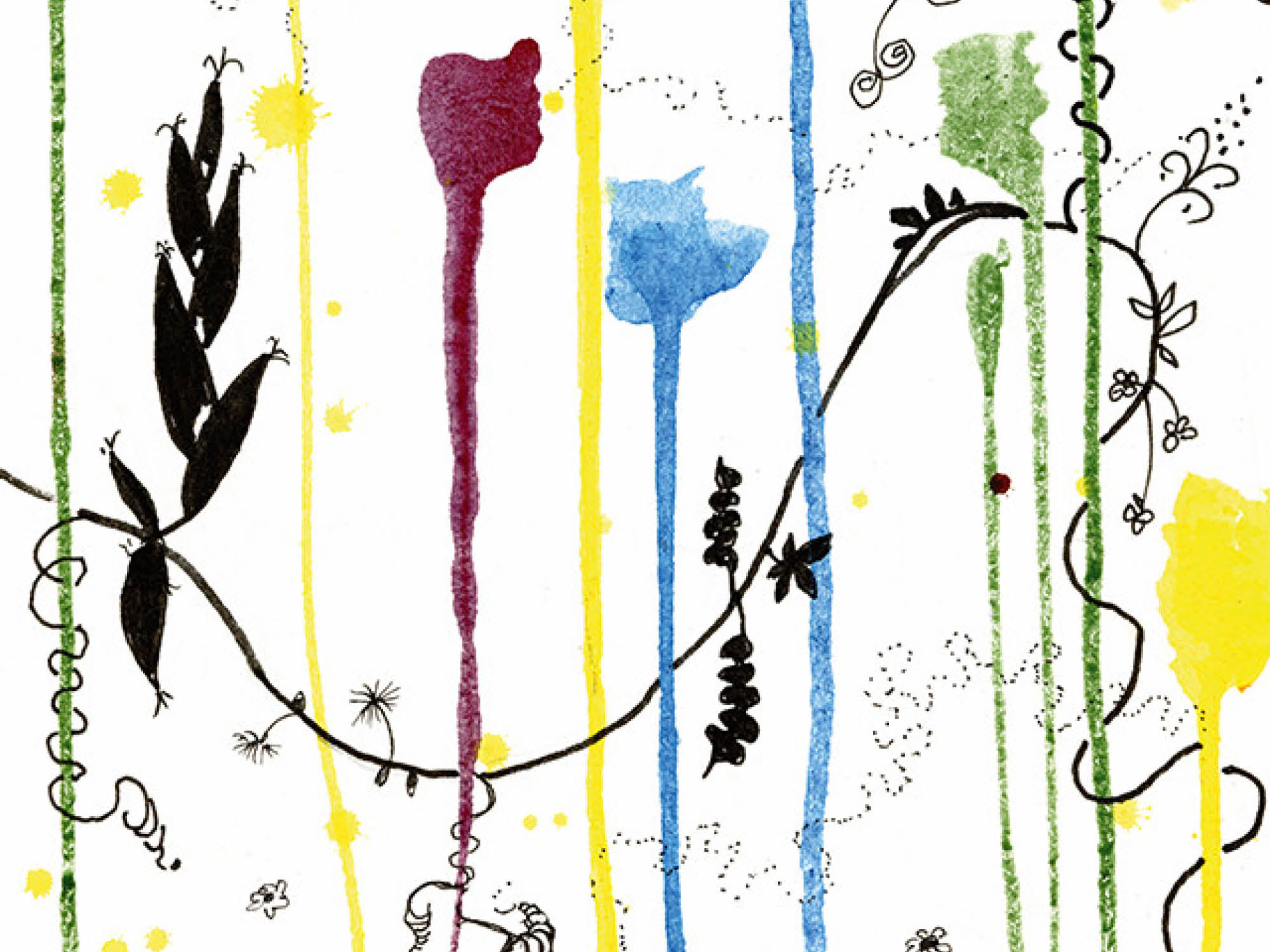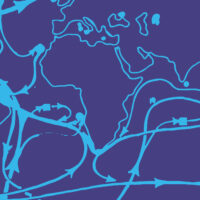The main characteristic of life is to communicate, to build social relationships, and to network.
A fantastic variety of tiny organisms pulsate in the soil. They enable plants, animals, and humans to survive. Microbes were already on Earth a few billion years before other life developed. They “invented” almost everything that makes up life—cellular respiration, cellular communication, and the formation of dynamic networks, for example. Every plant has a microbiome—a community of microorganisms—in its root area. This is by no means accidental, said the renowned microbiome researcher Gabriele Berg, whom I visited for my new book Verwoben & Verflochten [Woven & entangled]. A plant chooses which microbes it takes into its root microbiome, and it keeps harmful microbes and pathogens out. But how do plants choose? Through communication between roots and microbes and between the microbes themselves, said Professor Berg. What is astonishing is that every plant, therefore, has its own very specific root microbiome. The root microbiome is an essential part of the identity of the plant, or rather, of the “holobiont,” the entire living plant, including its associated microbiome.
Isolation Does Not Exist
Above ground, plants actively communicate with a wide variety of living beings. They warn each other of danger, attract beneficial organisms, send out SOS signals, or coordinate their behavior, with ever-changing bouquets of scents. Plants also perceive who is growing next to them: a plant of the same species or a stranger. They remember past events (such as insect damage) and learn from experience. Plants are therefore by no means “living automatons” that exist in isolation and passively follow their genetic program. So much about them has been discovered in recent decades that can no longer be explained with mechanistic concepts. This changes the way we look at life.
The Lazy Ant
I was particularly impressed in this regard by the statements of the Russian ant researcher Olga Bogatyreva, who spent 20 years studying the behavior of individual ants. Ants are not simply robots that rush around and are guided by some kind of swarm intelligence or divine authority. There are brave ants, innovative ants, or even lazy ants that hide under a blade of grass. The functioning of an ant colony depends on communication and cooperation between the ants.
Experienced and innovative ants are constantly developing new strategies, allowing a colony to adapt to abruptly changing environmental conditions. According to the ant researcher, the main characteristics of life are communicating, exchanging information, building social relationships, and networking. This, in turn, requires remembering, learning, making decisions, acting with intention, and having goals. This applies to ants and also to plants.
Utilizing these characteristics of living things is the great challenge for sustainable agriculture. In suitable diverse and mixed cultures, plants and their environment support each other in a wide variety of ways. Cooperation and competition are often indistinguishable—a network of relationships that is constantly changing. I have asked numerous experts and always received the same answer: diversity and mixed cultures, soil health, and local cycles are the recipes for the future. Compared to monocultures, diverse and mixed cultures are not only more resilient to climate upheaval or predators, they are also more productive. In other words, monocultures are a huge waste of land. Organic and biodynamic agriculture also need to increase their diversity, especially with regard to mixed crops.
Event
The Natural Sciences Section’s autumn conference, “Diversity Strengthens Identity,” will take place in Dornach from October 10th to 13th. Florianne Koechlin will give a keynote speech there.
Translation Laura Liska





